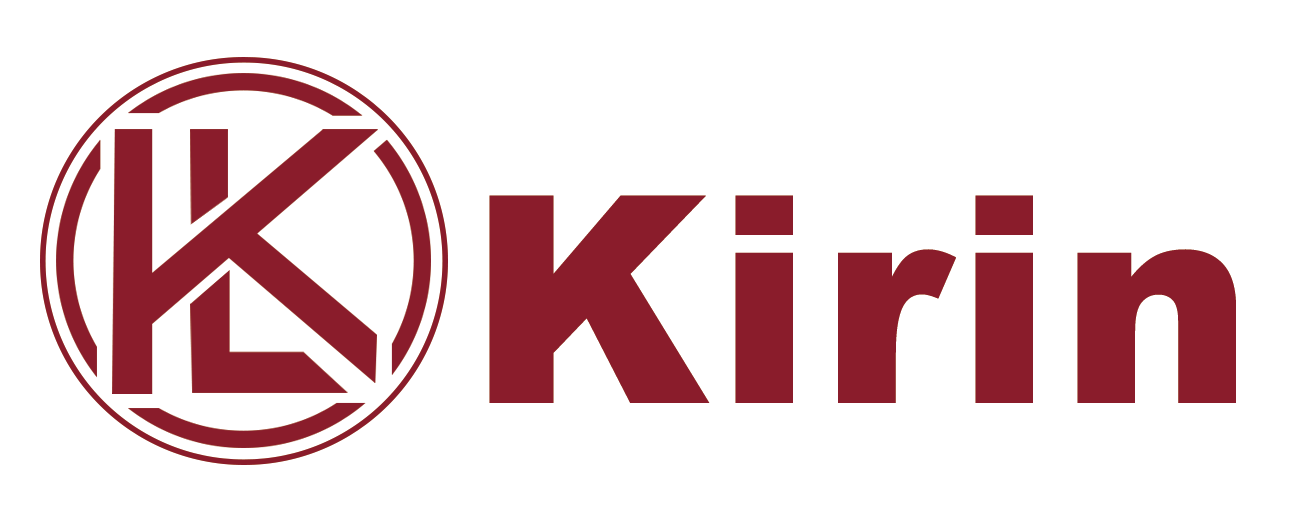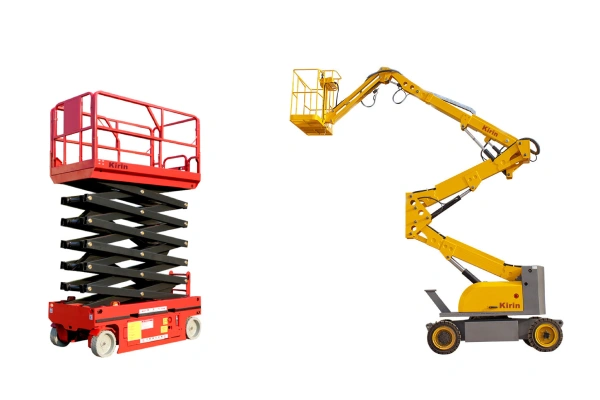Reaching New Heights – But How?
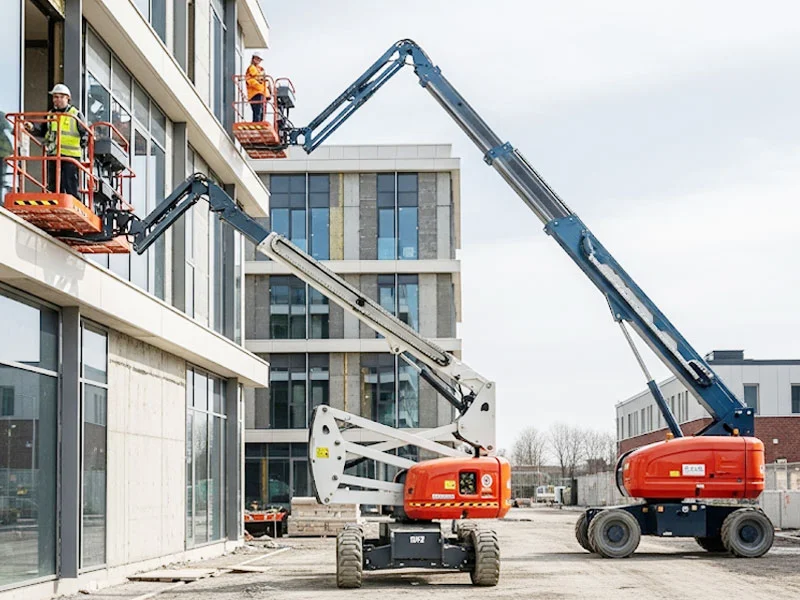
In the world of construction, maintenance, and various industrial applications, reaching elevated work areas safely and efficiently is paramount. When you look up at a job site, you’ll often see powerful machines extending skyward, allowing workers to access challenging spots. Two terms that frequently come up in this context are “telescopic lift” and “boom lift.” While often used interchangeably by those outside the industry, there are crucial distinctions between them. This blog post aims to clarify these differences, delve into the specifics of each type of equipment, and ultimately help you understand what a telescopic boom lift truly is and when to choose the right machinery for your specific project.
Understanding the Boom Lift: Versatility in the Air
Before we dissect the “telescopic” aspect, let’s first understand the broader category: the boom lift. A boom lift, at its core, is a type of aerial work platform (AWP) designed to lift workers and their tools to significant heights. It consists of a work platform or basket mounted on the end of a hydraulic arm, or “boom,” which is attached to a rotating turntable on a chassis.
The primary characteristic of a boom lift is its ability to extend both vertically and horizontally, allowing for precise positioning around obstacles. This versatility makes boom lifts indispensable for a wide array of tasks. There are two main sub-categories of boom lifts: articulating boom lifts and telescopic boom lifts. We’ll explore the latter in detail shortly, but it’s important to recognize that a telescopic boom lift is a type of boom lift.
What is a Telescopic Lift?
The term “telescopic lift” can sometimes be a source of confusion, as it often refers specifically to a telescopic boom lift. However, in a broader sense, “telescopic” describes a mechanism of extension, much like a telescope. Let’s define it more precisely in the context of aerial work platforms.
Definition: A telescopic lift, more accurately referred to as a telescopic boom lift, is a type of boom lift characterized by a straight, extendable boom that telescopes outwards, similar to a car antenna. Unlike articulating booms, which have multiple hinged sections, a telescopic boom extends in a linear fashion.
Functionality: The functionality of a telescopic boom lift is centered around its remarkable horizontal outreach and vertical reach. The boom sections slide within each other, propelled by hydraulic cylinders, allowing for smooth and controlled extension to considerable distances. This direct, linear extension is what sets it apart.
Key Features & Advantages:
- Exceptional Horizontal Outreach: This is arguably the biggest advantage of a telescopic boom lift. Its straight boom design allows it to reach out further horizontally than articulating boom lifts of comparable size, making it ideal for accessing areas that are far away from the machine’s base.
- High Vertical Reach: Telescopic boom lifts are also known for their impressive vertical reach, often exceeding that of many other aerial work platforms.
- Greater Stability: Due to their rigid boom structure, telescopic boom lifts generally offer greater stability at full extension, which can be crucial in windy conditions or when handling heavier loads (within safe working limits).
- Faster to Position for Direct Access: When the access point is a straight shot, a telescopic boom lift can often be positioned and extended more quickly than an articulating boom, as there are fewer boom sections to maneuver.
- Simplicity of Operation (for straightforward tasks): For tasks requiring a direct vertical or horizontal extension, the operation can be simpler due to the fewer number of boom movements compared to an articulating boom.
Common Applications:
- Construction: Reaching high structural elements, installing roofing, façade work on multi-story buildings.
- Bridge Inspection and Maintenance: Accessing undersides and difficult-to-reach sections of bridges.
- Telecommunications: Installing and maintaining antennas on towers and tall structures.
- Industrial Maintenance: Performing repairs and inspections on large machinery or high ceilings in warehouses.
- Tree Trimming: Reaching high branches that are difficult to access otherwise.
- Signage Installation: Erecting and maintaining large signs on buildings or poles.
- Shipbuilding: Accessing various parts of large vessels during construction or repair.
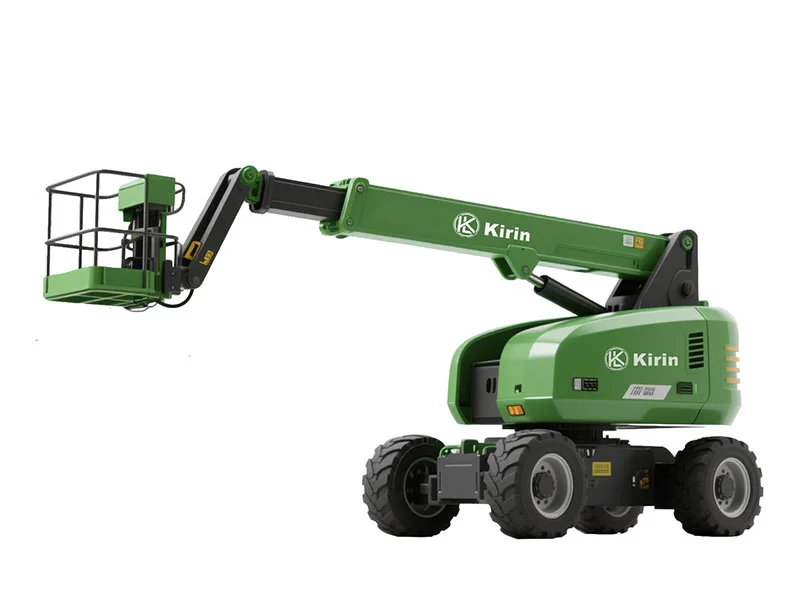
Key Differences: Telescopic Lift vs. Articulating Boom Lift
Now that we have a clear understanding of what a telescopic boom lift is, let’s highlight the primary differences between it and its close cousin, the articulating boom lift (often simply referred to as a “boom lift” when distinguishing from telescopic).
| Feature | Telescopic Boom Lift | Articulating Boom Lift |
| Boom Design | Straight, rigid boom that extends linearly (telescopes). | Multiple hinged sections (“knuckles”) that bend and articulate. |
| Reach | Excellent horizontal outreach and vertical reach. | Excellent “up and over” capabilities to navigate obstacles. |
| Maneuverability | Less maneuverable around obstacles due to straight boom. | Highly maneuverable, can reach around objects and tight spaces. |
| Positioning | Best for direct access, straight-line reach. | Best for complex access, navigating around pipes, beams, etc. |
| Stability | Generally higher stability at full extension. | Can be slightly less stable at maximum articulation points. |
| Applications | Construction, bridge work, telecom, large-scale maintenance. | General maintenance, interior work, tight access areas, tree trimming. |
| Common Names | Stick boom, straight boom. | Knuckle boom, Z-boom. |
Demystifying the “Telescopic Boom Lift” Terminology
As you’ve likely gathered, the term “telescopic boom lift” is not redundant; it’s a specific and accurate description. It refers to a type of boom lift that utilizes a telescopic mechanism for its boom extension. Therefore, every telescopic boom lift is a boom lift, but not every boom lift is telescopic (some are articulating).
The confusion often arises because “boom lift” is a general category, and “telescopic lift” is sometimes used colloquially to mean a telescopic boom lift. However, the most precise and unambiguous term for the equipment we’ve been discussing is “telescopic boom lift.”
Choosing the Right Lift for Your Project
Selecting the appropriate aerial work platform is crucial for safety, efficiency, and cost-effectiveness. Here’s a guide to help you choose between a telescopic boom lift and an articulating boom lift:
Consider the Obstacles:
- If your work area is clear and requires a direct vertical or horizontal reach with minimal obstructions, a telescopic boom lift is likely the more efficient choice due to its faster extension and greater horizontal outreach.
- If you need to reach up and over obstacles, navigate around pipes, beams, or work in confined spaces with irregular access, an articulating boom lift’s ability to bend and articulate will be invaluable.
Determine the Required Reach:
- For maximum horizontal outreach, especially for tasks like bridge inspection or facade work on large buildings, a telescopic boom lift often provides the best solution.
- Both types offer significant vertical reach, but assess whether the primary need is for straight vertical extension or a combination of vertical and horizontal maneuvering.
Evaluate the Terrain and Workspace:
- Telescopic boom lifts often have larger footprints due to their straight boom, so ensure you have sufficient space for setup and operation.
- Consider the ground conditions. Many telescopic boom lifts are available with rough-terrain capabilities, making them suitable for uneven or unpaved job sites.
Assess the Task and Load:
- If you require high stability for tasks like welding, heavy material placement, or working in windy conditions, the rigid design of a telescopic boom lift can be advantageous.
- For tasks requiring precise positioning in complex environments, the articulation of an articulating boom lift might be more suitable, even if the load capacity is slightly lower.
Think About Transport and Mobility:
- The size and weight of the chosen lift will impact transportation costs and site mobility.
- Some projects might benefit from smaller, more maneuverable articulating booms, while others demand the extended reach of a large telescopic boom lift.
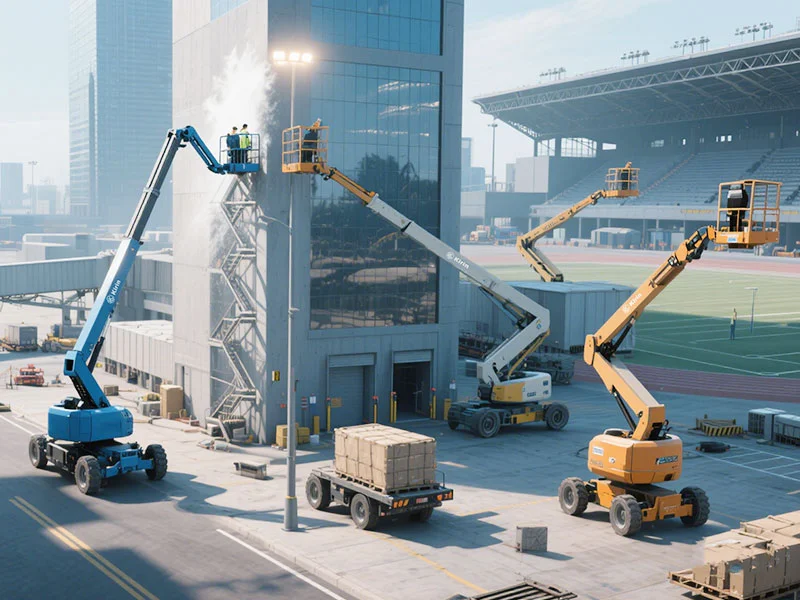
Conclusion: Making an Informed Decision
Navigating the terminology and choosing the right aerial work platform can seem daunting, but by understanding the core differences between a telescopic boom lift and an articulating boom lift, you can make an informed decision that optimizes your project’s safety, efficiency, and budget. The key takeaway is that a telescopic boom lift is a specific type of boom lift designed for maximum reach and stability in straightforward access scenarios. By carefully evaluating your project’s unique requirements, you can confidently select the machinery that will help you reach new heights, safely and effectively.
FAQs
Q: Can a telescopic boom lift be used indoors?
A: While primarily used outdoors due to their size and typically diesel engines, some smaller electric or hybrid telescopic boom lifts exist that can be used indoors, provided there is adequate ventilation and floor load capacity.
Q: Are telescopic boom lifts safer than articulating boom lifts?
A: Both types of boom lifts are safe when operated by trained personnel in accordance with manufacturer guidelines and safety regulations. The perceived “safety” can depend on the specific task. The stability of a telescopic boom lift can be an advantage in certain scenarios, while the maneuverability of an articulating boom can prevent hazardous repositioning.
Q: What is the maximum reach of a telescopic boom lift?
A: The maximum reach varies significantly depending on the model and manufacturer. Some of the largest telescopic boom lifts can offer vertical reaches exceeding 180 feet and horizontal outreaches of over 80 feet.
Q: What kind of training is required to operate a telescopic boom lift?
A: Operators must receive proper training specific to the type of aerial work platform they will be operating, including classroom instruction and hands-on practical training. This training typically covers safe operation, pre-use inspections, hazard recognition, and emergency procedures. Certification is often required by regulatory bodies.
Q: What are some common maintenance checks for a telescopic boom lift?
A: Regular maintenance checks include inspecting hydraulic fluid levels, checking for leaks, examining tires and wheels, testing controls and emergency stops, inspecting the boom for cracks or damage, and ensuring all safety decals and manuals are present and legible. Following the manufacturer’s recommended maintenance schedule is crucial.
